The Greatest Games for NES: 1985-87
Back when the Nintendo Entertainment System was new and untested, these amazing releases helped make it the console every kid wanted to own.
This article first appeared on USgamer, a partner publication of VG247. Some content, such as this article, has been migrated to VG247 for posterity after USgamer's closure - but it has not been edited or further vetted by the VG247 team.
When Nintendo launched its first home console, the NES, it showed up in America more than two years after the system's Japanese debut as the Famicom. The delay happened for a good reason — Nintendo more or less had to single-handedly resuscitate the U.S. console games market first — but it left Americans running a bit behind their overseas peers.
But was that really such a bad thing? Sure, the Famicom saw some solid games before the NES ever arrived, but those were almost entirely simple, primitive works, reminiscent (or even ports) of arcade titles.
When the NES launched in the U.S., its library initially consisted of the best of those games; but at the same time, Famicom software had begun to explode with greater creativity and depth, establishing Nintendo's machine as something more than a home for scaled-down renditions of arcade software.
Thankfully, it didn't take long for those newfangled creations to make their way West, and by the time the NES turned two — which was right around the time it started to make serious headway in the U.S. — a new kind of console game had put down its roots. Console gaming matured from its golden age arcade form into something more like what we know today right as the NES became a phenomenon, which means that the NES offered owners a front-row seat to the best and most innovative games of the era.
Here are the 10 most impressive, most entertaining, and most significant releases for the NES from its launch in 1985 through the end of 1987, when the system hit the big time.
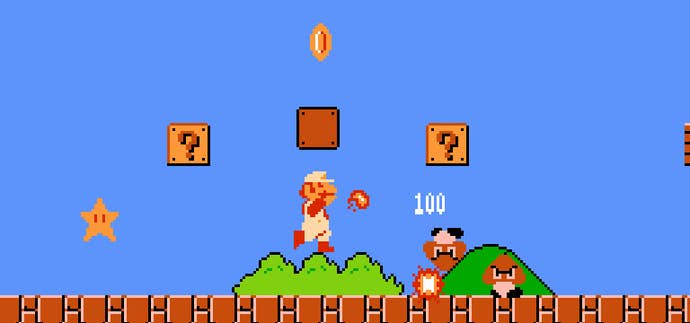
Super Mario Bros.
Nintendo | Oct. 1985
Virtual Console: Wii, Wii U, 3DS
No surprise that Super Mario Bros. kicks off this list — it also kicked off the NES, launching at around the same time as the system's test run in New York and San Francisco for holiday 1985. No one would saw this game in action could have said no to the NES — it blew away everything that had come before it. The game's creators designed it to be the ultimate cartridge-based game, knowing the Famicom's Disk System peripheral was set to launch soon after, and they delivered in spades. Huge, challenging, vibrant, immensely playable, and loads of fun, Super Mario Bros. was Nintendo's bold announcement to the world that they had arrived.
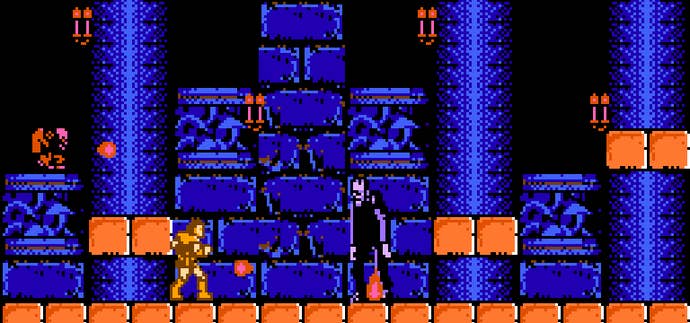
Castlevania
Konami | May 1987
Virtual Console: Wii, Wii U, 3DS
Castlevania wasn't the first third-party game for NES by any means, but you could argue that it was the first great one. Simple, challenging, visually stunning, with music like nothing ever heard before in a video game, Castlevania transformed schlocky horror flicks into intense platforming action. It even came with its own built-in counterpoint: A month after it debuted in Japan, Konami launched a version of the game for MSX computers that played much the same yet had a totally distinct structure. The differences between the two threw the nature of NES game design into sharp relief.
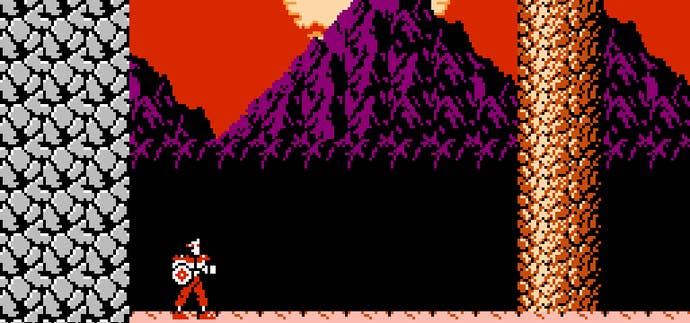
Rygar
Tecmo | July 1987
Virtual Console: No
Rygar may well have launched a trend. Back in the '80s, home adaptations of arcade games felt like watered-down compromises, as home hardware couldn't begin to compete with powerful standalone arcade boards. Rather than deliver a pathetic-looking version of arcade brawler Rygar, Tecmo decided to completely reinvent the game. It transformed into a sprawling, nonlinear adventure combining 2D platforming with a top-down hub world, and it even integrated a rudimentary RPG system. Far more groundbreaking than most people give it credit for... and way better than the arcade game, honestly.
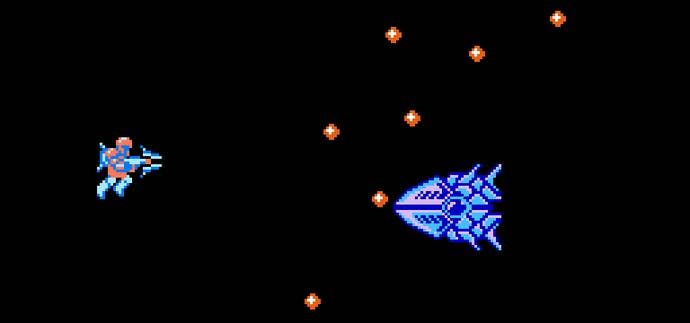
Section Z
Capcom | July 1987
Virtual Console: No
Like Rygar, Section Z gave NES owners a rather liberal interpretation of an arcade action game. While the fundamental design of the coin-op remained intact — it was a horizontally scrolling shooter with independent buttons to determine the direction of your attacks — it abandoned the strictly linear, straightforward arcade structure in favor of a complex maze-like approach in which the game became broken into tiny zones that forced players to pick between two different paths forward at the end of each one. Complex and difficult, but all the more unique for the change.
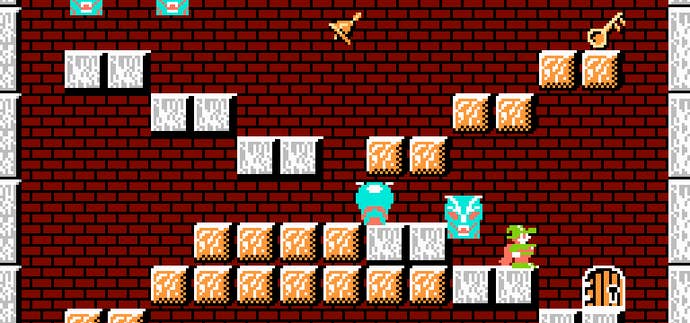
Solomon’s Key
Tecmo | July 1987
Virtual Console: Wii, Wii U, 3DS
Solomon's Key, on the other hand, remained faithful to its arcade incarnation. Players controlled a small adventurer with the power to create and destroy blocks, forced to find his way through dozens of intricate and challenging mazes packed with deadly monsters. The first great puzzle action game on the system.
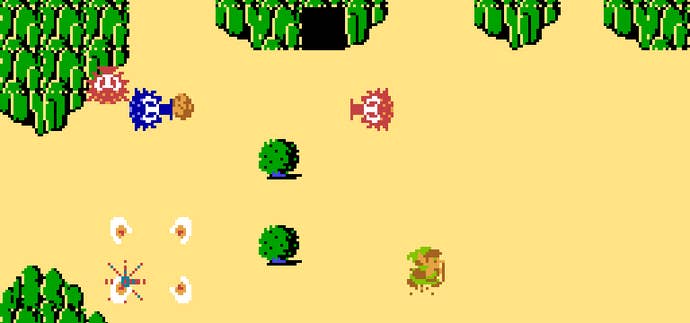
The Legend of Zelda
Nintendo | Aug. 1987
Virtual Console: Wii, Wii U, 3DS
By 1987, the role-playing game had long been established on personal computers: Huge, complicated things with rudimentary graphics at best and opaque interfaces. The Legend of Zelda showed how an RPG could work — and work well! — on a console with only a handful of buttons. With a top-down perspective similar to Ultima and a brisk style clearly inspired by Namco's Tower of Druaga, Zelda didn't appear from the blue, precisely... but it definitely combined many existing ideas in a wholly new and compelling fashion. Plus, it came in a fancy gold cartridge.
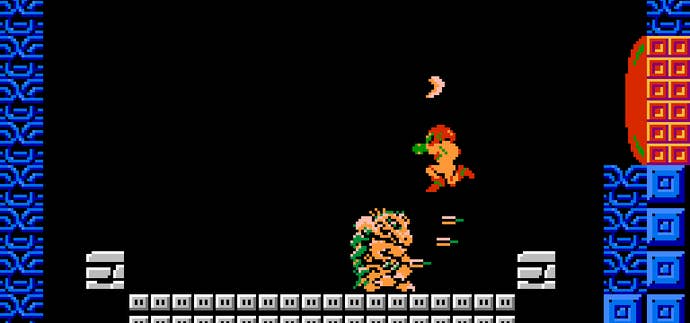
Metroid
Nintendo | Aug. 1987
Virtual Console: Wii, Wii U, 3DS
If Super Mario represented Nintendo at its action-oriented best and Zelda showed its chops for RPG-style adventures, Metroid stood somewhere in the middle. Combining the run-and-jump mechanics of Mario with the exploration and inventory system of Zelda, Metroid attempted to be the best of both worlds. It wasn't entirely successful, but it launched an entire genre of games that built on its foundation — no mean feat, really.
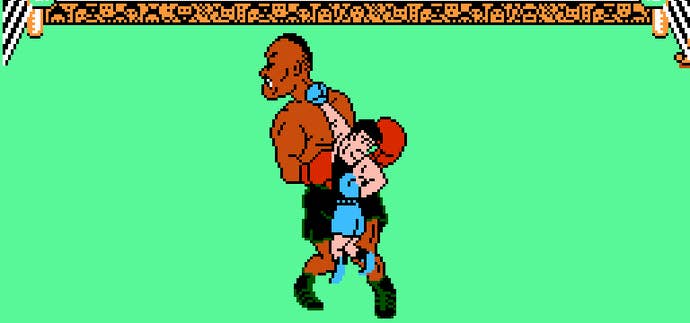
Mike Tyson's Punch-Out!!
Nintendo | Oct. 1987
Virtual Console: Wii, Wii U, 3DS
Even Nintendo got in on the act of transforming its arcade hits into something almost unrecognizable in the process of converting them to NES. Punch-Out!! was one of the company's final arcade creations, and it was a visual slobberknocker, featuring enormous boxers from a unique behind-the-hero perspective (the player's character was presented as a transparent contour grid through which you could see your opponent). No way could the NES tackle that, even with the new MMC2 chip enabling larger sprites. So the home game played up the sense of personality with a cast of wacky boxers and a tiny protagonist, while turning boxing into something like a rhythm game/Simon Says hybrid. Oh, and Mike Tyson showed up as the boss, but it was a lie — that dude can't even beat Glass Joe.
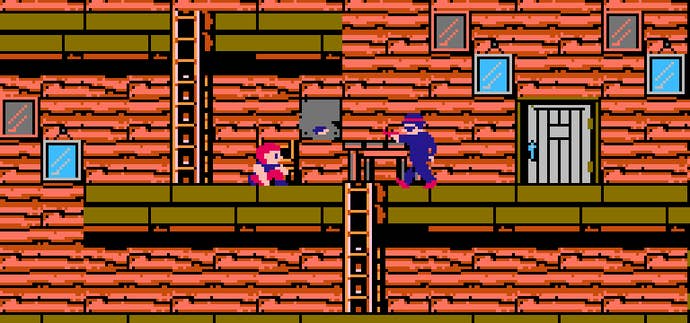
The Goonies II
Konami | Nov. 1987
Virtual Console: No
Konami's original take on Richard Donner's The Goonies barely showed up in the U.S., remaining a Japan-exclusive home release. But we got the sequel, and it was by far the better game. If ever you needed a demonstration of just how much NES games had matured since the system's launch, compare The Goonies II — a vast, sprawling, action adventure — against its PlayChoice 10 predecessor. While often every bit as opaque as Metroid, The Goonies II was far more ambitious and creative than a movie licensed game had any right to be.
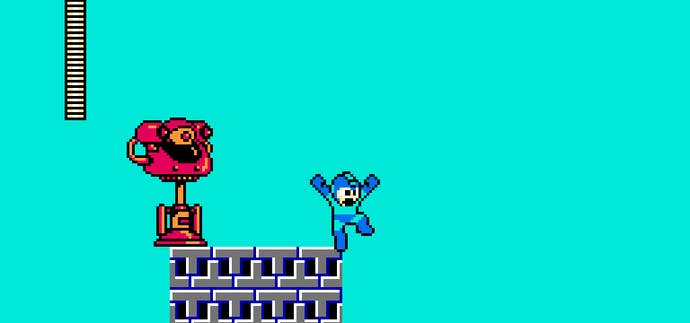
Mega Man
Capcom | Dec. 1987
Virtual Console: Wii, Wii U, 3DS, PS1 Classics
And finally, bringing up the tail end of 1987, the original Mega Man served as a perfect capstone for the NES's formative days. A simple platformer on the surface, Mega Man well exceeded anyone's expectations by allowing players to mix-and-match the order in which they tackled the game's stages and rewarding each victory with a power-up that changed the nature of the gameplay. Like many of these early games, Mega Man has some rough patches... but on the whole, it represented a step forward for the system's library. And for developer Capcom!

